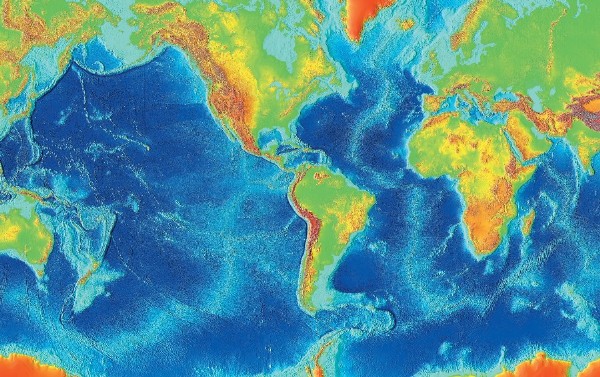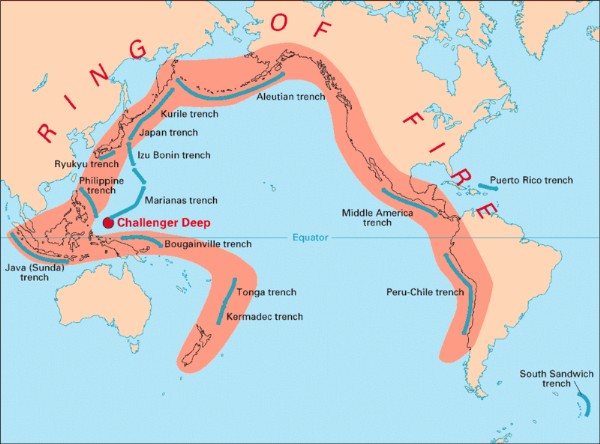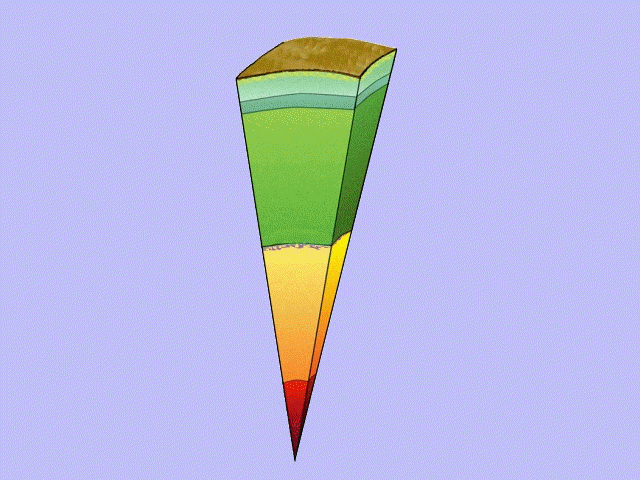
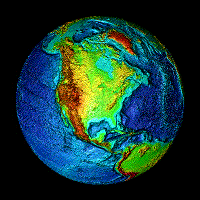
J. Marvin Herndon's Whole-Earth Decompression Dynamics
| Introduction | |
|
Early in the twentieth century, Alfred Wegener, pictured at right, proposed that the continents at one time had been united, but subsequently had separated and drifted through the ocean floor to their present positions [2]. Wegener’s theory of continental drift, vigorously opposed for half a century, was revived in the 1960s, and modified to become plate tectonics theory. When plate tectonics theory was originally proposed, there was much discussion and debate, but eventually, plate tectonics became the stuff of textbooks, its potential problems and a competitive theory rarely, if ever, mentioned. |
|
 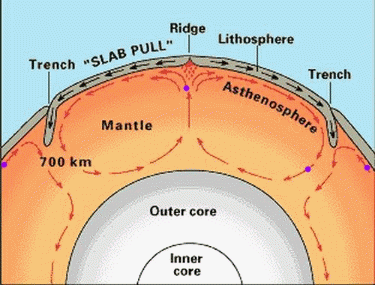 The popularity of plate tectonics arises from its seeming to explain major features of the ocean floor, but popularity is not a measure of scientific correctness. Science is a logical process, not a democratic process. Plate tectonic theory is based upon the idea that ocean floor, continuously produced at mid-oceanic ridges, as illustrated at left, moves like a conveyer belt, ultimately being “subducted” and re-circulated by assumed convection currents in the mantle, as illustrated at right [3-5]. Indeed, compelling evidence, e.g., seafloor magnetic striations, exists to support the idea of seafloor being continuously produced at mid-oceanic ridges and moving away from the ridges. The magnetic stripes are symmetrical on each side of the ridge and are older in age the greater distance from the ridge. Moreover, ocean floor is observed to plunge downward into oceanic trenches. |
|
In science, advances are made, not by
cataloging a theory's successes, but by revealing its short-comings. Too often
people think that mantle convection "must" exist because plate tectonics
seems
"correct", rather questioning whether there might be a problem with mantle
convection. J. Marvin Herndon, pictured at left, did in fact question mantle
convection and
When a fluid is heated from beneath, it expands becoming lighter, less dense, than the fluid above it. This top-heavy arrangement is unstable, so fluid motions result as the fluid attempts to restore stability. The top-heavy arrangement occurs because the temperature at the bottom is hotter than at the top. This is convection. Not only is the Earth’s mantle not a fluid, but the weight of over-burden rock causes compression within the mantle, which increases with depth. Matter at the bottom of the mantle is about 62% more dense than at the top, as shown in the figure at right. Heating bottom-rock causes a miniscule increase in volume, hence miniscule decrease in density, much, much less than 1%. This is far, far too little to make the "parcel" of bottom-mantle light enough to float to the top, not enough to make the mantle top-heavy; the result is no mantle-convection at all. Moreover, the tacit assumption that the solid mantle behaves as an ideal gas with no viscous loss, i.e., adiabatic, is incorrect as evidenced by earthquakes at depths as great as 660 km. Often Earth-mantle convection is (wrongly) "justified" by calculating a high Rayleigh Number. But, as discovered by Herndon, Lord Rayleigh's derivation was based upon constant density and, thus, is not applicable to the Earth's mantle [6]. So, unequivocally, plate tectonics theory is not correct. Why? Because the crucial underlying part is physically impossible, which means that plate tectonics theory is wrong. That might not be surprising as plate tectonics is an incomplete theory, a theory without an energy source to power geodynamic activity. |
|
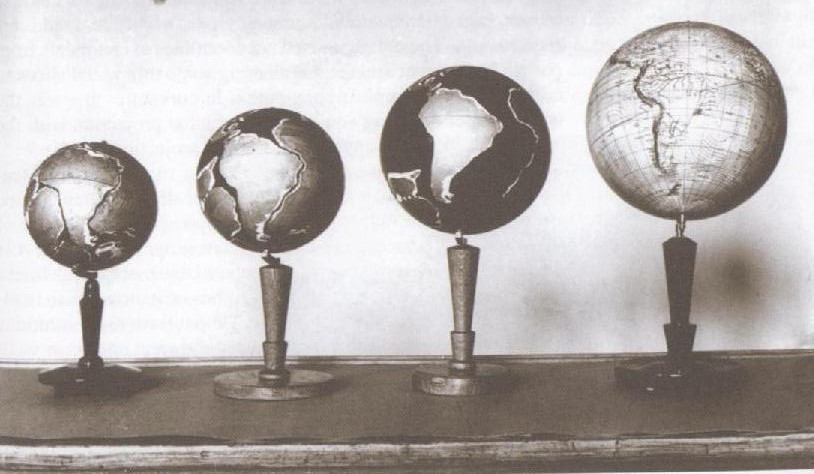  In 1933, Ott C. Hilgenberg, pictured at right, published his idea that in the distant past for some unknown reason the Earth was smaller, without ocean basins, and that subsequently the Earth expanded [7,8]. The photo at left shows a series of globes made by Hilgenberg to illustrate his idea. An alternative to plate tectonics theory, Earth expansion theory, as espoused by S. Warren Carey [9, 10] and others, has met with resistance because of the lack of knowledge of an energy source of sufficient magnitude and because it is based upon the idea that Earth expansion occurs mainly along mid-oceanic ridges and thus occurred during the last 180 million years, as the oldest ocean floor is no older than that [11]. Planets generally consist of concentric shells of matter, except Earth with its unique, two-component surface, comprised of about 41% continental rock with the balance being quite different ocean floor basalt. To date there has been no satisfactory explanation for the partial, crustal continental rock layer, except by assuming that the Earth in the distant past was smaller and subsequently expanded [7, 8]. The principal impediment to the idea of Earth expansion has been the lack of knowledge of a mechanism that could provide the necessary energy [13, 14] without departing from the known physical laws of nature [15]. In 1982, Adrian E. Scheidegger [16] stated concisely the prevailing view: "Thus, if expansion on the postulated scale occurred at all, a completely unknown energy source must be found." Recognizing that neither plate tectonics theory nor Earth expansion theory is an adequate description of the dynamics of the Earth as a whole, J. Marvin Herndon proposed a new geodynamic theory, called Whole-Earth Decompression Dynamics [12], which reconciles certain elements of those two seemingly divergent theories into one unified theory of Earth dynamics. Moreover, Herndon disclosed a completely unknown energy source, which follows from fundamental considerations related to planetary formation [17-20], that is sufficient to power geodynamics. |
|
| Protoplanetary Origin of Herndon's Whole-Earth Decompression Dynamics | |
|
The idea of Earth having been a Jupiter-like gas-giant follows from observations. Close-to-star gas-giant planets are observed in other planetary systems [23]. Moreover, Earth, together with its complement of lost primordial gases, comprises a protoplanetary mass remarkably similar to the mass of Jupiter. Significantly, Herndon has shown the rock-plus-alloy kernel that is now Earth, being crushed by about 300 Earth-masses of primordial gases, would be compressed to about 64 percent of its current radius, the same compression required to yield a closed, contiguous continental shell [18-20]. Upon the subsequent removal of its protoplanetary gaseous shell, the Earth would begin to decompress [18], driven by the stored energy of protoplanetary compression [12].
There is evidence from nature to indicate the feasibility of such a great T-Tauri event. The photo at right shows an outburst from the binary XZ-Tauri as observed by the Hubble Space Telescope over a period of five years. The white crescent shows the leading edge of the plume five years before time of the present image. The distance the leading edge had progressed in five years is about 130 times the distance from Earth to the Sun. Had our young Sun experienced a T-Tauri outburst of this magnitude, it would have stripped the gaseous envelopes, not only from the inner planets, but from the gas giants as well [20]. |
|
| Principles of Herndon's Whole-Earth Decompression Dynamics | |
|
As viewed from the surface in idealized representation, Whole-Earth Decompression Dynamics is characterized primarily by the following two distinct, but related, processes: (i) the formation of secondary decompression cracks (often near continental margins), and (ii) the in-filling of those cracks with basalt (produced by volume decompression in the mantle), which is extruded mainly at mid-oceanic ridges, solidifies and traverses the ocean floor by gravitational creep to regions of lower gravitational potential energy, ultimately plunging downward into and in-filling distant decompression cracks.
Note that, in Whole-Earth Decompression Dynamics, no mantle convection is required to explain, in a logical, causally related way, the features of ocean floor that previously have been attributed to plate tectonics and to seafloor spreading. |
|
| Geological Features of Herndon's Whole-Earth Decompression Dynamics | |
|
In Whole-Earth Decompression Dynamics, oceanic troughs are thought to be partially in-filled decompression cracks; oceanic troughs are inexplicable in plate tectonics.
|
|
| Whole-Earth Decompression Dynamics Similarity with Plate Tectonics | |
|
Whole-Earth Decompression Dynamics extends plate tectonic concepts as it is responsible for Earth’s well-documented features. Fold-mountain formation does not exclusively require plate collisions. Partially in-filled secondary decompression cracks uniquely explain oceanic troughs, inexplicable by plate tectonics. And, compression heating at the base of the rigid crust is a direct consequence of mantle decompression. Plate tectonic meanings and terminology are to a great extent preserved in my new paradigm. For example, transform plate boundaries are identical; divergent plate boundaries are similar, but with a different driving mechanism; convergent plate boundaries likewise are similar, but down-plunging plates neither create oceanic trenches, which are secondary decompression cracks, nor are they recycled through the mantle by conveyer-like mantle convection, and; Wadati-Benioff earthquake zones are quite similar, with the possible exception of why mantle melting occurs that is responsible for sometimes associated volcanic eruptions. Many of the plethora of observations, taken to support plate tectonics, support Whole-Earth Decompression Dynamics as well. |
|
| Georeactor as Hotspot Heat Source | |
| Hotspots power the volcanic activity that is continuing to produce basalt-lava that forms the Hawaiian Islands and Iceland. Seismic tomography appears to image vertical, column-like heat paths extending to the edge of the core for each of those hotspots. Recently, Norwegian scientists, R. Mjelde and J. I. Faleide [32], discovered that basalt eruptions in the Hawaiian Islands and in Iceland varied significantly over time. Remarkably, the pulse-like variations in productivity and time in each case were synchronized, as if being orchestrated by a common mechanism, even though the two hotspots are located on opposite sides of the globe. Subsequent work by Mjelde, Wessel, and Müller [33] suggests the co-pulsations are a global hotspot phenomenon. The commonality appears to represent changes in heat from the Earth’s core. Georeactor-heat produced by nuclear fission can be variable, unlike heat from the natural decay of long-lived radioactive isotopes, which is essentially constant, decreasing slightly over very-long periods of time. | |
| Timescale for Herndon's Whole-Earth Decompression Dynamics | |
|
The timescale for whole-Earth decompression is not yet known with certainty. One might think that whole-Earth decompression should have commenced promptly upon removal of protoplanetary hydrogen and other volatile constituents, but even the time of the initial primary crack formation is not known. The timescale for decompression may be related to the pre-degasification protoplanetary thermal state, to the dynamics of degasification, especially the cooling that might have been involved, to mantle properties, to the cooling that results from decompression, and to the time required to replace heat lost by decompression cooling. Further, the energy required for initiating a crack is generally considerably greater than the energy required for crack propagation. The timescale for the Earth’s full rebounding from protoplanetary compression may be long, even extending into the present; witness, for example, the relatively minor rebounding of northern land masses, following post-Pleistocene deglaciation, being measured in thousands of years [27]. A much, much longer time may be expected for rebounding from compression due to protoplanetary-scale loading by approximately 300 Earth-masses of volatile constituents. The Earth appears to be approaching the terminus of its decompression. If the Earth is presently decompressing, length of day measurements should show progressive lengthening. Such measurements, made with increasing precision over the last several decades, show virtually no current lengthening [28], implying no current secondary decompression crack formation. The formation of secondary decompression cracks might be episodic, though, like the release of stress by major earthquakes, or secondary crack formation may have ended forever. But major secondary decompression cracks are still conspicuously evident, for example, circum-pacific trenches. And, the complementary Whole-Earth Decompression Dynamics process of basalt extrusion and crack in-filling continues at present. Secondary crack formation and the in-filling of those cracks are complementary elements of the same Whole-Earth Decompression Dynamics process. Even in the absence of current secondary decompression crack formation, an estimate may be obtained of recent-period whole-Earth decompression by considering the amount of in-filling basalt presently being produced. The value obtained is consistent with length of day measurements [12]. Much higher basalt extrusion rates undoubtedly have occurred in the past, as the present estimated annual percent increase in radius, if constant over the lifetime of the Earth, would have only resulted in a 2 percent increase in radius. |
|
| Heat Transport in Herndon's Whole-Earth Decompression Dynamics | |
|
As illustrated at right, heat generated within the core from actinide decay and/or fission [19, 20] or from actinide decay within the mantle may enhance mantle decompression by replacing the lost heat of protoplanetary compression. The resulting decompression, beginning at the bottom of the mantle, will tend to propagate throughout the mantle, like a tsunami, until it reaches the impediment posed by the base of the crust. There, crustal rigidity opposes continued decompression, pressure builds and compresses matter at the mantle-crust-interface, resulting in compression heating. Ultimately, pressure is released at the surface through volcanism and through secondary decompression crack formation and/or enlargement. Mantle decompression thermal-tsunami poses a mechanism for emplacing heat at the base of the crust, which may explain the geothermal gradient, temperature becoming greater with depth within the crust. Moreover, it may prove to be a significant energy source for earthquakes and volcanism, as these geodynamic processes appear concentrated along secondary decompression cracks. The nature of heat transport in the Earth is described in detail by Herndon [30]. In J. Marvin Herndon’s view, virtually all major geological activity is the consequence of a single process: Earth-crust fragmentation – splitting the Earth’s crust to form new surface area to accommodate decompression-increased planetary volume. Crustal fragmentation, called rifting, provides all of the crucial components for petroleum-deposit formation: basin, reservoir, source, and seal. Rifting causes the formation of deep basins, as presently occurring in the Afar triangle of Northeastern Africa. Augmented by heat channeled upwards from deep within the Earth, uplift from sub-surface swelling can sequester sea-flooded lands to form halite evaporate deposits, lead to dome formation, and can make elevated land susceptible to erosion processes, thus providing sedimentary material for reservoir rock in-filling of basins. Moreover, crustal fragmentation potentially exposes deep basins to sources of abiotic mantle methane and, although still controversial, methane-derived hydrocarbons [31]. YouTube Video: No Mantle Convection!!! (click here) Plate tectonics theory is incomplete, providing no energy source for geodynamics and depends critically on the assumption of mantle convection. This video shows the reason that mantle convection is physically impossible. YouTube Video: 21st Century Earth Dynamics Part 1 (click here) and 21st Century Earth Dynamics Part 2 (click here) This is a two-part video about a complete, new geodynamic theory, recently published in the scientific literature, called Whole-Earth Decompression Dynamics, that unifies and supersedes plate tectonics and Earth expansion theories. |
|
| References | |
| 1. |
Suess, E., Das Antlitz der Erde. 1885, Prague and Vienna: F. Tempky. |
| 2. | Wegener, A. L., Die Entstehung der Kontinente. Geol. Rundschau, 1912. 3, 276-292. |
| 3. | Davies, G. F., Whole-mantle convection and plate tectonics. Geophysical Journal of the Royal Astronomical Society, 1977. 49, 459-486. |
| 4. | Peltier, W. B., Mantle Convection. 1989, New York: Gordon and Breach. |
| 5. | Runcorn, S. K., XX. Changes in the convection pattern in the Earth's mantle and continental drift: evidence for a cold origin of the Earth. Philosophical Transactions of the Royal Society of London, 1965. A258, 228-251. |
| 6. |
Herndon, J. M., Uniqueness of Herndon's georeactor: Energy source and production mechanism for Earth's magnetic field. arXiv:0901.4509 28 Jan 2009. (click here for pdf) |
| 7. | Hilgenberg, O. C., Vom wachsenden Erdball. 1933, Berlin: Giessmann and Bartsch. 56. |
| 8. | Hilgenberg, O. C., Palaopollagen der Erde. Neues Jahrb. Geol. Palaont. Abh., 1962. 116, 1-56. |
| 9. | Carey, S. W., The Expanding Earth. 1976, Amsterdam: Elsevier. 488. |
| 10. | Carey, S. W., Theories of the Earth and Universe - A History of Dogma in the Earth Sciences. 1988, Stanford: Stanford University Press. 413. |
| 11. | Khramov, A. N., Paleomagnetology. 1982, Heidleberg: Springer-Verlag. 308. |
| 12. | Herndon, J. M., Whole-Earth decompression dynamics. Current Science, 2005. 89(10), 1937-1941. (click here for pdf) |
| 13. | Beck, A. E., Energy changes in an expanding Earth, in The Application of Modern Physics to the Earth and Planetary Interiors, S.K. Runcorn, Editor. 1969, Wiley: London, 77-83. |
| 14. | Cook, M. A. and Eardley, A. J., Energy requirements in terrestrial expansion. Journal of Geophysical Research, 1961. 66, 3907-3912. |
| 15. | Jordan, P., The Expanding Earth: Some Consequences of Dirac's Gravitation Hypothesis, in International Series of Monographs in Natural Philosophy. 1971, Pergamon, Oxford, 202. |
| 16. | Scheidegger, A. E., Principles of Geodynamics. 1982, Heidelberg, Springer-Verlag. |
| 17. | Herndon, J. M., Solar System formation deduced from observations of matter. arXiv:astro-ph/0408151 9 Aug 2004. (click here for pdf) |
| 18. | Herndon, J. M., Protoplanetary Earth formation: further evidence and geophysical implications. arXiv:astro-ph/0408539 30 Aug 2004, 2004. (click here for pdf) |
| 19. | Herndon, J. M., Solar System processes underlying planetary formation, geodynamics, and the georeactor. Earth, Moon and Planets, 2006. 99, 53-99. (click here for pdf) |
| 20. | Herndon, J. M., Maverick's Earth and Universe. 2008, Vancouver: Trafford Publishing, ISBN 978-1-4251-4132-5. |
| 21. | Herndon, J. M., Nature of planetary matter and magnetic field generation in the Solar System. Current Science, 2009, 96, 1033-1039. (click here for pdf) |
| 22. | Eucken, A., Physikalisch-chemische Betrachtungen ueber die frueheste Entwicklungsgeschichte der Erde. Nachr. Akad. Wiss. Goettingen, Math.-Kl., 1944: p. 1-25. |
| 23. | Beer, M. E., et al., How special is the Solar System? arXiv:astro-ph/0407476 22July 2004, 2004. |
| 24. | Herndon, J. M., Feasibility of a nuclear fission reactor at the center of the Earth as the energy source for the geomagnetic field. Journal of Geomagnetism and Geoelectricity, 1993. 45, 423-437. (click here for pdf) |
| 25. | Herndon, J. M., Nuclear georeactor origin of oceanic basalt 3He/4He, evidence, and implications. Proceedings of the National Academy of Sciences USA, 2003, 100(6), 3047-3050. (click here for pdf) |
| 26. | Herndon, J. M., Origin of mountains and primary initiation of submarine canyons: the consequences of Earth's early formation as a Jupiter-like gas giant. (click here for pdf) Current Science, 2012, 102, 1370-1372. |
| 27. | Mc Connell, R. K., Isostatic adjustment in a layered Earth. Journal of Geophysical Research, 1965. 70, 5171-5188. |
| 28. | Chao, B. F., The geoid and Earth rotation, in The Geoid and Its Geophysical Interpretation, P.V.a.N. Christou, Editor. 1994, CRC Press: Boca Raton, Florida, 285-298. |
| 29. | Herndon, J. M., Energy for geodynamics: Mantle decompression thermal tsunami. Current Science, 2006. 90, 1605-1606. (click here for pdf) |
| 30. | Herndon, J. M., Geodynamic basis of heat transport in the Earth. Current Science, 2011. 101, 1440-1450. (click here for pdf) |
| 31. | Herndon, J. M., Impact of recent discoveries on petroleum and natural gas exploration: Emphasis on India. Current Science, 2010, 98, 772-779. (click here for pdf) |
| 32. | Mjelde, R. and Faleide, J. I., Variation of Icelandic and Hawaiian magmatism: evidence for co-pulsation of mantle plumes? Mar. Geophys. Res., 2009, 30, 61–72. |
| 33. | Mjelde, R., Wessel, P. and Müller, D., Global pulsations of intraplate magmatism through the Cenozoic. Lithosphere, 2010, 2(5), 361–376. |
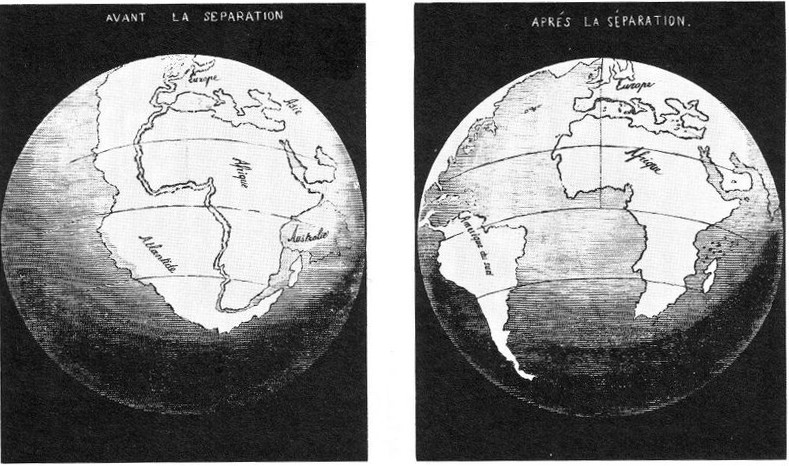

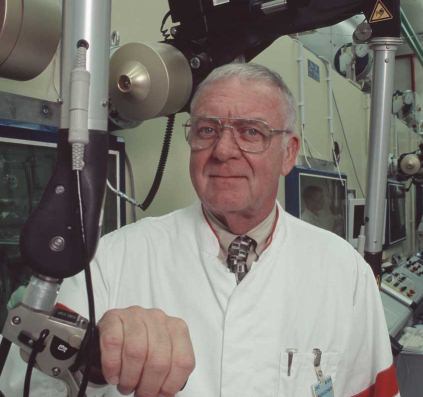 found a serious problem
[6]. Indeed, the critical assumption of
mantle convection is truly the
Achilles heel of
found a serious problem
[6]. Indeed, the critical assumption of
mantle convection is truly the
Achilles heel of
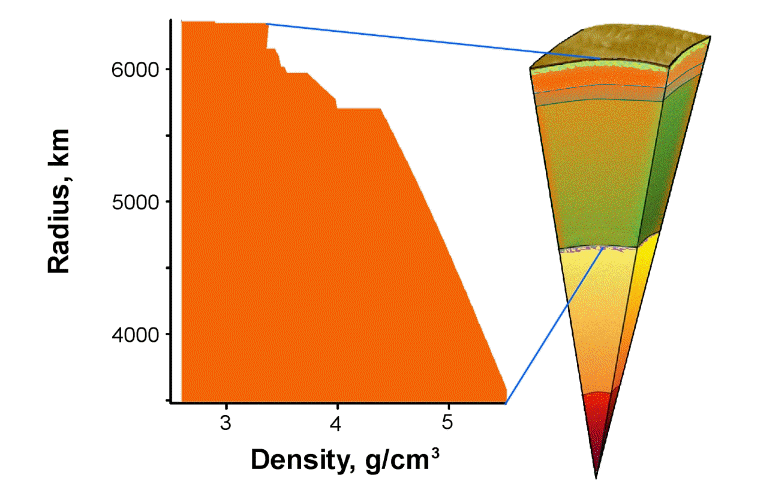 plate tectonics.
plate tectonics.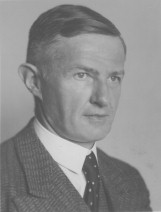

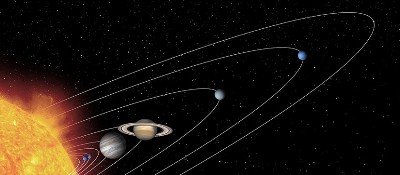
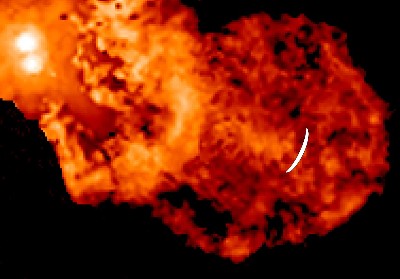
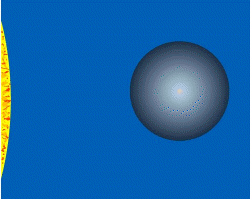

 As
the Earth subsequently decompresses, the area of the Earth’s surface
increases by the formation of secondary decompression cracks, often
located near the continental margins, presently identified as oceanic
trenches. These secondary decompression cracks are subsequently
in-filled with basalt, extruded from the mid-oceanic ridges, which
traverses the ocean floor by gravitational creep, ultimately plunging
into and in-filling secondary decompression cracks, as illustrated
schematically at left.
As
the Earth subsequently decompresses, the area of the Earth’s surface
increases by the formation of secondary decompression cracks, often
located near the continental margins, presently identified as oceanic
trenches. These secondary decompression cracks are subsequently
in-filled with basalt, extruded from the mid-oceanic ridges, which
traverses the ocean floor by gravitational creep, ultimately plunging
into and in-filling secondary decompression cracks, as illustrated
schematically at left. 